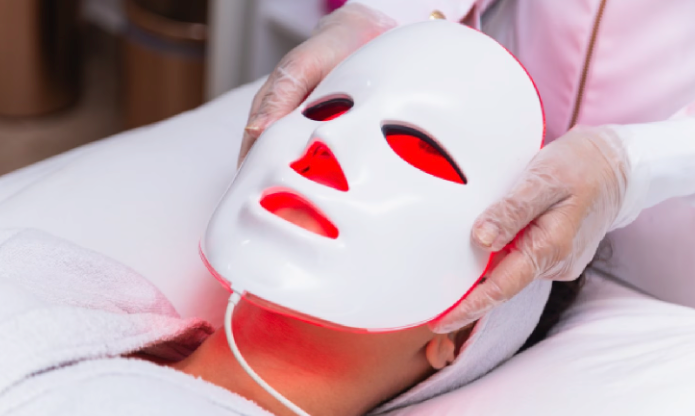Can LED Light Therapy Really Help Reduce Acne?

Acne is a common skin condition that affects millions of people worldwide, often leading to scarring and emotional distress. While there are numerous acne treatment options available, LED light therapy has recently gained popularity as a non-invasive and effective way to reduce acne. But, does it really work? In this blog post, we will explore the science behind LED light therapy and its efficacy in the treatment of acne.
LED (Light Emitting Diode) light therapy works by using different wavelengths of light to penetrate the skin at different depths, targeting specific skin concerns. In the case of acne, the therapy uses blue light with a wavelength of 415nanometers, which has been shown to be effective in killing acne-causing bacteria that thrive in the skin's sebaceous glands. By targeting the bacteria, LED therapy helps to reduce inflammation and redness associated with acne, allowing the skin to heal naturally.
Research into the efficacy of LED light therapy has shown promising results in the treatment of acne. According to a 2013 study published in the Journal of Clinical and Aesthetic Dermatology, patients who underwent three 20-minute sessions of blue LED light therapy per week for four weeks experienced a significant reduction in acne lesions. The study also showed an improvement in skin texture and tone, indicating that LED therapy can provide an overall improvement to the skin's health.
Unlike other acne treatments that can have unpleasant side effects, LED therapy is non-invasive and has no adverse effects. There are no harsh chemicals used, and the treatment is painless, so patients can get back to their routine immediately after a session. However, it's important to note that LED therapy is not a one-size-fits-all treatment and may not work for everyone. In some cases, a combination of treatments may be necessary.
It's also essential to note that while LED therapy can provide significant improvements in the appearance of acne, it's not a cure for the condition. Like any acne treatment, LED therapy must be used in conjunction with good skincare practices such as cleansing, toning, and moisturizing. It's also important to maintain a healthy lifestyle and diet to reduce the likelihood of future acne breakouts.
While some people may still be skeptical about LED light therapy's efficacy in treating acne, research shows that it can significantly improve skin's appearance and texture, without the use of harsh chemicals or invasive procedures. Combining LED therapy with good skincare practices has the potential to deliver excellent results for those who suffer from acne. However, it's important to review your individual needs with a dermatologist to determine whether LED light therapy is the right treatment for you. If you're looking for a non-invasive and effective way to treat acne, LED light therapy may be worth considering.
If you are in the San Diego area and would like to learn more about our services or book an appointment today, click here. If you are new to Vasseur Skincare or needed help choosing the right skincare, click here. If you would like to talk with one of our Vasseur team members for a free consultation, click here and we will get back with you as soon as we can (please allow 1-3 business days for a response).
Leave a comment
Comments will be approved before showing up.
Also in Education
Copper Serum and Red Light Therapy: Your New Skincare Power Duo
Learn how combining copper peptide serum with red light therapy can boost collagen, reduce wrinkles, and enhance your skin's health for radiant results.
Green Tea Serum & Red Light Therapy: The Ultimate Skin Duo
Discover how combining green tea serum with red light therapy can boost collagen, fight aging, and give you radiant skin. Learn how to use them together.
Boost Red Light Therapy with Copper Peptide & Green Tea Serums
Learn how to combine red light therapy with copper peptide and green tea serums to enhance collagen production, reduce wrinkles, and achieve radiant skin.